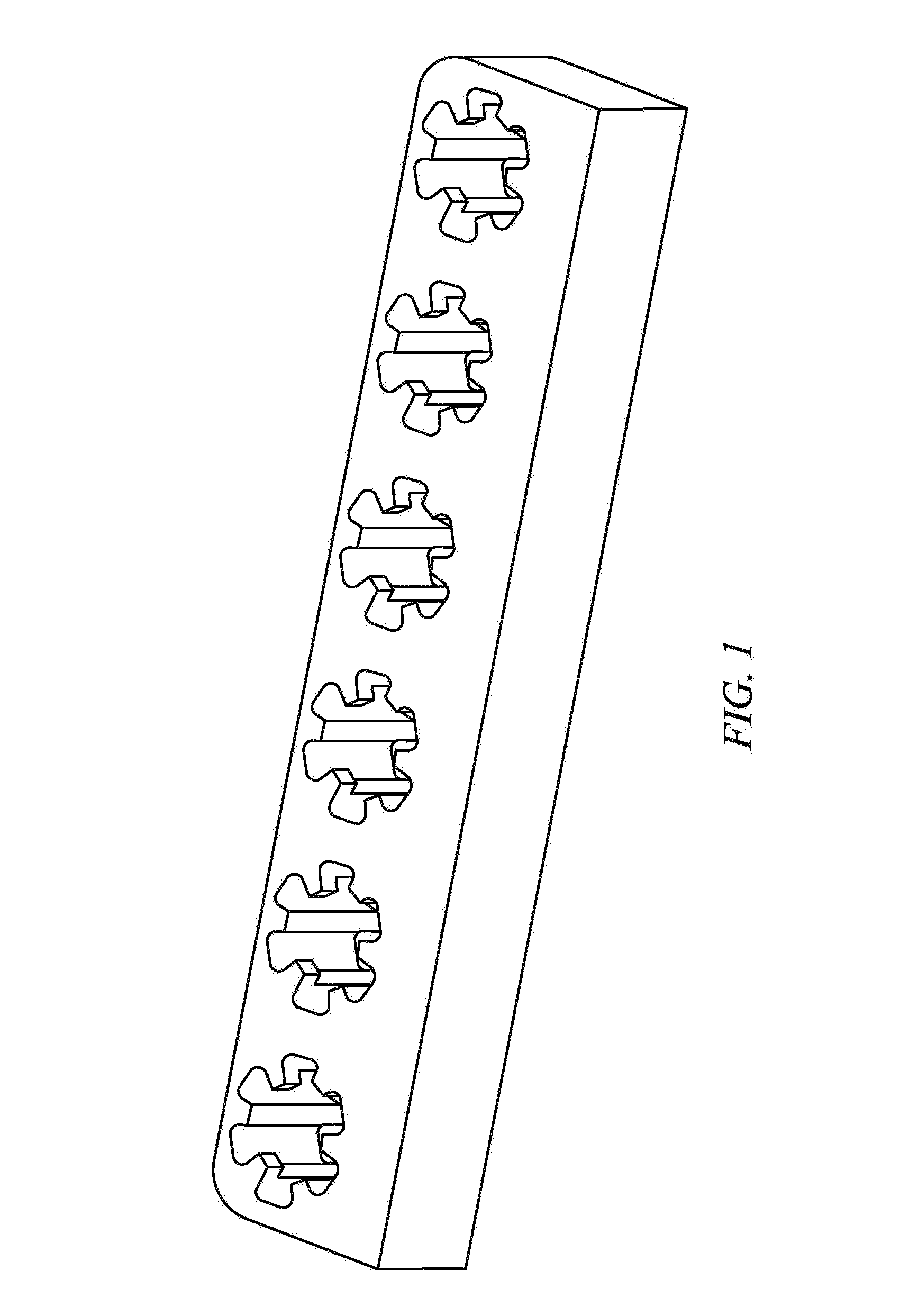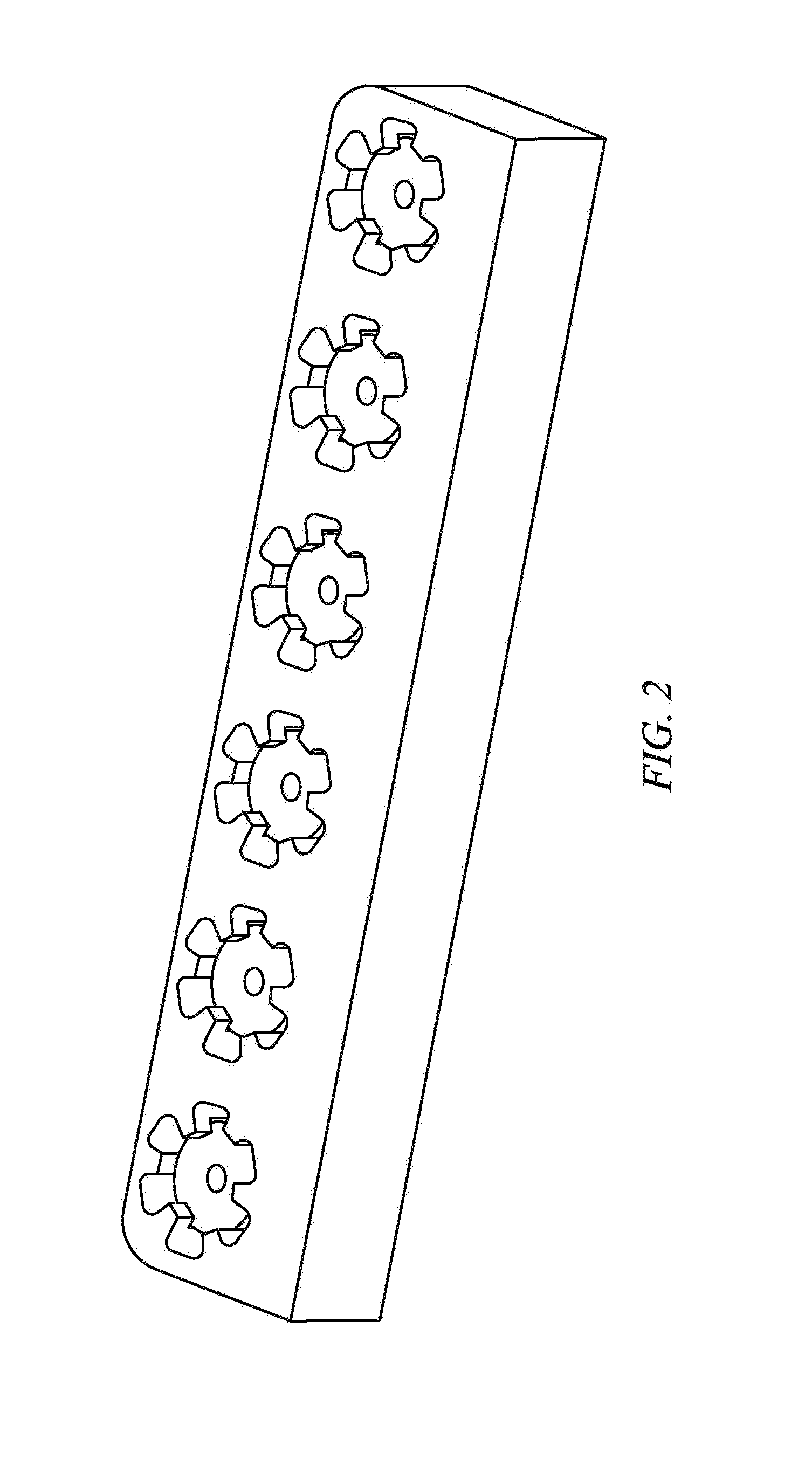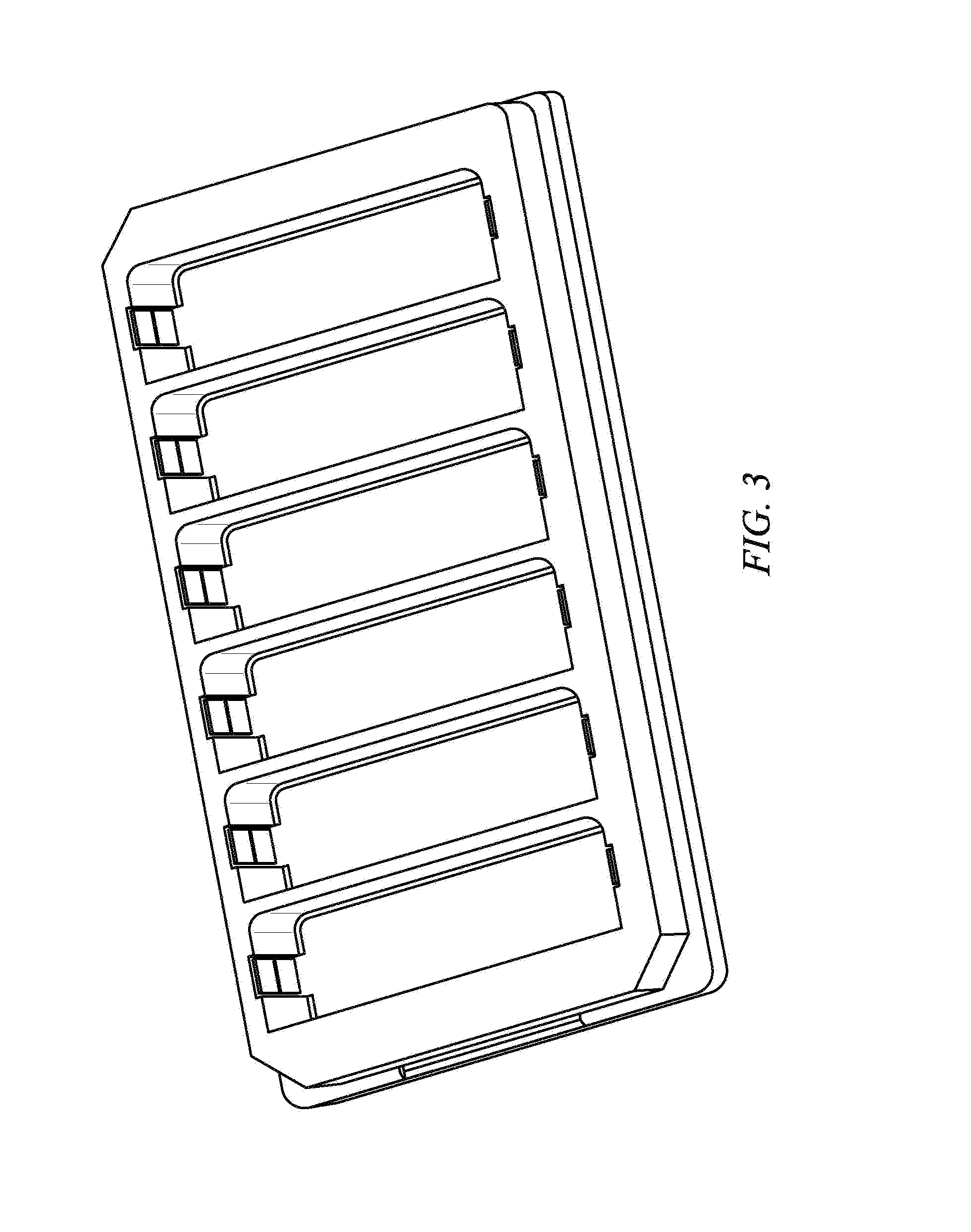Biosample storage devices and methods of use thereof
a biological sample and storage device technology, applied in the field of biological sample storage devices, can solve the problems of complex and labor-intensive maintenance and administrative responsibilities of system operators, the difficulty of the complexity of the process of drying biological samples, so as to facilitate the effect of facilitating evaporation and/or air flow
- Summary
- Abstract
- Description
- Claims
- Application Information
AI Technical Summary
Benefits of technology
Problems solved by technology
Method used
Image
Examples
example 1
[0113]As shown in FIG. 1, a sample carrier of the invention can include six cylindrical openings that pass entirely through the sample carrier. Each opening includes six sub-opening spaces and six inwardly-pointing protrusions. Each sub-opening space has an increasingly larger width outwards of the center of the opening. The openings are asymmetrically positioned such that they are closer to the rear margin of the sample carrier, thereby providing space at the front margin of the sample carrier that can be used to hold the sample carrier and / or present an identifying indicia, such as a bar code. In this embodiment, the sample carrier is substantially flat and has dimensions of 70 mm (width)×15 mm (depth)×7 mm (thickness). The central axes of the openings are located 9.5 mm from the rear margin of the sample carrier, and are separated from one another by 11.6 mm.
[0114]As shown in FIG. 2, each opening of the sample carrier of FIG. 1 is capable of holding a sample node. In this embodim...
example 2
[0118]As shown in FIG. 5, a storage system of the invention can include a sample carrier comprising a cup-like morphology and a corresponding receptacle. In this embodiment, the sample carrier comprises an opening and a sample node, wherein the opening has three ridge-like protrusions that hold the cylindrical, 6 mm (diameter)×5 mm (height) elastomeric sample node. The sample carrier also includes a sealing mechanism—threading—which can interface with threading on the corresponding receptacle and thereby seal the sample carrier, protecting the sample node from external contamination and containing any infectious agents associated with a sample stored on the sample node. In this embodiment, the receptacle comprises a drier packet (e.g., comprising a desiccant) capable of driving evaporation of water from a sample applied to the sample node of the sample carrier.
[0119]As shown in FIG. 6, a tray of the invention can be used to hold storage systems. In this embodiment, the tray holds up...
example 3
[0121]The rate of sample node drying was evaluated for sample carriers of the type shown in FIG. 2. Two sample carriers with six 150 uL polyurethane sponge sample nodes were first weighed without any sample. Then, 150!-LL of 100 mM Tris Buffer or 150!-LL of whole blood was added to each of the six wells in one of the sample carriers. The samples were allowed to soak into the elastomer sample node, the entire sample carrier was weighed again, and the weight of the sample carrier without any sample was subtracted to generate the “0” time point. While drying, the sample carriers were stored in a chamber at regulated humidity (35%) which had, within it, a small fan to circulate air around the sample carriers. The sample carriers were removed from the chamber over time and re-weighed to determine the rate of evaporative water loss from the elastomer sample nodes. As shown in Table 1, the time of half maximal evaporative loss occurred at less than 1 hour for both sample types, with comple...
PUM
| Property | Measurement | Unit |
|---|---|---|
| area | aaaaa | aaaaa |
| area | aaaaa | aaaaa |
| area | aaaaa | aaaaa |
Abstract
Description
Claims
Application Information
 Login to View More
Login to View More - R&D
- Intellectual Property
- Life Sciences
- Materials
- Tech Scout
- Unparalleled Data Quality
- Higher Quality Content
- 60% Fewer Hallucinations
Browse by: Latest US Patents, China's latest patents, Technical Efficacy Thesaurus, Application Domain, Technology Topic, Popular Technical Reports.
© 2025 PatSnap. All rights reserved.Legal|Privacy policy|Modern Slavery Act Transparency Statement|Sitemap|About US| Contact US: help@patsnap.com



